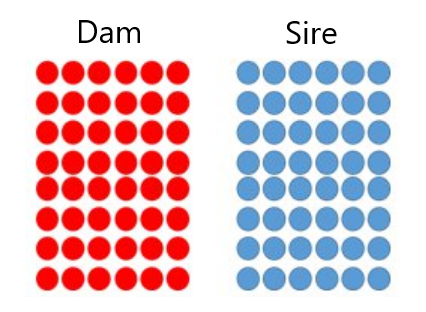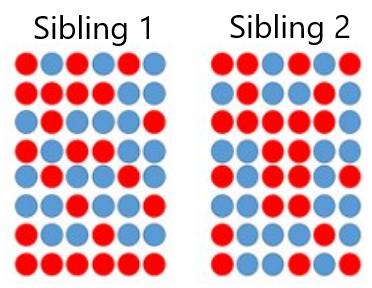Do All Siblings Have The Same Makeup
For the majority of u.s.a., we are lucky enough to accept brothers and sisters, siblings who we share the aforementioned parentage with. Does this mean that we are the verbal same as our 'full brothers' and 'full sisters'? If your brother is an Olympic weight lifter and you lot train and eat just as good as him, does this hateful that you are guaranteed to become to the Olympics also?
In the sporting world, there are some examples of siblings performing near as good equally each other. Take Venus and Serena Williams for example or one closer to home in Gary and Paul O Donovan. However even when we await at these examples of both siblings performing well, ane yet outperforms the other. Serena Williams I'm sure you lot volition agree has been a more successful tennis player than her older sibling Venus.
The signal however is that the above examples are rare. In that location are sets of brothers playing county hurling or football together just there are a lot more examples of 'one who made it and one who did not'. One brother may have been taller and went on to play professional basketball in the NBA, the other may have been shorter and never made the cut. The reason being, we are not even so and we do not inherrit the exact same gear up of genes and this is no unlike in cattle.
A cow/bull just like their siblings inherit thirty chromosomes from each of their parents. But because of many unlike DNA combinations being possible at mating, their chromosomes have a different combination of genes than their siblings. Genes that control a specific office are located at a unique spot on a certain pair of chromosomes. Yet on boilerplate, half of the genes are nonetheless the same. Why is this? Cattle have two copies of each gene. This means that a cow'due south parents can pass either of their two copies downward to them and their siblings.

Imagine their parent's genes as coloured coins. Each coin has a reddish and a blue side, representing the two copies of each of their genes. The chances of inheriting a red or a blue is just like flipping a coin, totally random. Since cattle accept 22,000 genes in their DNA, whether they inherit the 'red' or 'blue' of each cistron is like flipping a coin 22,000 times. If we do that, we are almost probable to become 1/two 'reds' and ane/2 'dejection'.

Even though full siblings will have inherited genes differently from their parents, nosotros more often than not do not have this data until an animal is genotyped. This is why cattle get a parental boilerplate at nativity and at this stage full siblings volition have the same alphabetize figures. When genotyped we can access this data and identify the difference in genes between siblings. Index figures volition nigh certainly exist different after existence genomically tested.
Why are figures different when I haven't genotyped them nonetheless?
This is a very valid question, we now know total siblings take inherited genes differently but how tin can they have different figures without genomics to show this? The respond is phenotypic information (weights, calving surveys etc.) For instance, full siblings born on the same day (twins/embryo births), have different indices at 6-months of historic period, one has an alphabetize of €100 and one is €91. The calves are only half-dozen months old and haven't been genotyped, how tin can they take a different index? In this example both calves take been weighed recently with one calf out performing the other. In that location was besides a difference at birth with one calf beingness born 9kg heavier than the other, one requiring some assistance and one being a normal calving. Although but half dozen months of age, the information for calving survey, nascency weight and weaning weight is different for these full siblings. There are already performing differently even at this early phase which isn't surprising.
So even though full siblings accept the same father and the same mother, receive 50% of their DNA from their sire and 50% from their dam, the full siblings can have differences in their genetic makeup. Genomics data allows u.s. to place better what exact genes have been inherited from each side and for this reason genomics is much more than accurate than a parental average (PA). Phenotypic data will also aid identify difference betwixt full siblings.
Source: https://www.icbf.com/?p=11729
Posted by: brennensours1947.blogspot.com

0 Response to "Do All Siblings Have The Same Makeup"
Post a Comment